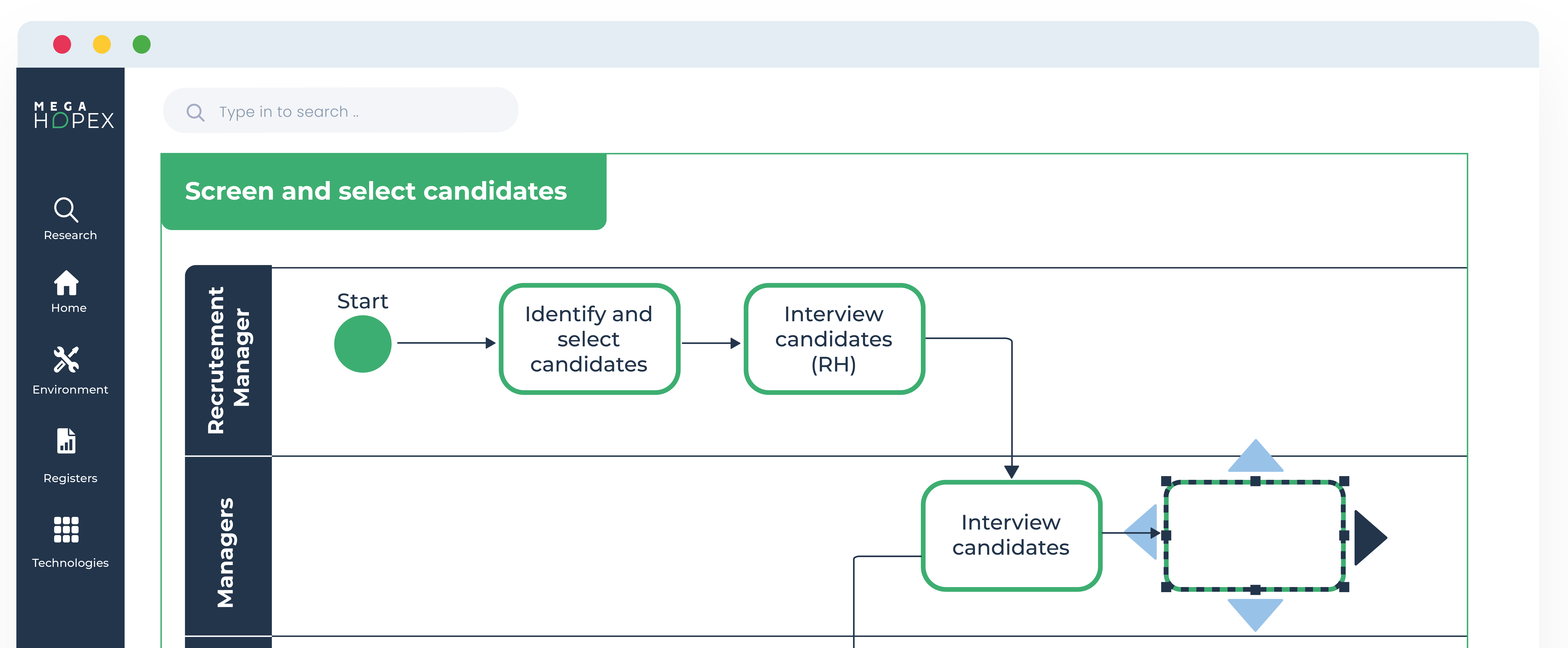
Business Process Modeling Guide
Business process modeling is critical for organizations that want to improve efficiency and effectiveness. It involves analyzing and mapping out business processes to make them more streamlined and easier to manage. This article will delve into the basics of business process modeling and discuss some popular modeling techniques and tools.
What is a Business Process Model, and Why Do You Need It?
A business process model is a graphical representation of a business process. It depicts the sequence of activities required to complete a specific task. It also includes information about the resources, roles, and systems involved in the process. But why do you need a business process model?
Understanding Business Processes
Before diving into the benefits of business process modeling, it's essential to understand business processes. A business process is a series of interrelated tasks or activities that produce a specific output. These processes can be operational, administrative, or supportive. For instance, the process of onboarding a new employee or the process of fulfilling an order are examples of business processes.
The Basics of Business Process Modeling
Business process modeling involves three basic elements:
- Process flow
- Process stakeholders
- Process documentation
The process flow refers to the sequence of activities involved in the process. The process stakeholders are the people or systems involved in the process. And process documentation refers to detailed information about the process, such as its purpose, inputs, outputs, and business rules.
The Benefits of Business Process Modeling
So, what are the benefits of business process modeling? There are several, including:
- Increased efficiency: You can eliminate waste and reduce errors by analyzing and streamlining your business processes.
- Improved decision-making: A business process model provides a clear and concise overview of the entire process, making it easier to identify areas for improvement.
- Better collaboration: A shared understanding of business processes makes it easier for teams to work together and achieve their goals.
- Greater agility: By modeling your business processes, you can quickly adapt to changing circumstances and stay ahead of the competition.
Business Process Modeling Techniques: Which One to Use?
There are several techniques that you can use when it comes to business process modeling. The most popular ones include:
BPMN: Business Process Model and Notation
BPMN, or Business Process Model and Notation, is a standard notation for business process modeling. It provides a graphical representation of the process flow, activities, events, and data objects involved in the process. BPMN is a powerful tool for modeling complex business processes and is widely used by organizations worldwide.
UML: Unified Modeling Language
The Unified Modeling Language, or UML, is another popular modeling technique. It is a general-purpose, object-oriented modeling language that can be used to model various systems, including business processes. UML is useful for modeling a system's structure and behavior, making it an excellent choice for modeling complex business processes.
Process Flow Diagrams and Flowcharts
Process flow diagrams and flowcharts are two other techniques that you can use for business process modeling. They visually represent the process flow and are easy to understand. While they may not be as powerful as BPMN or UML, they are helpful for simple processes or for providing an overview of the entire process.
How to Use Business Process Modeling in Practice
To use business process modeling, use this information to optimize the process and make it more efficient.
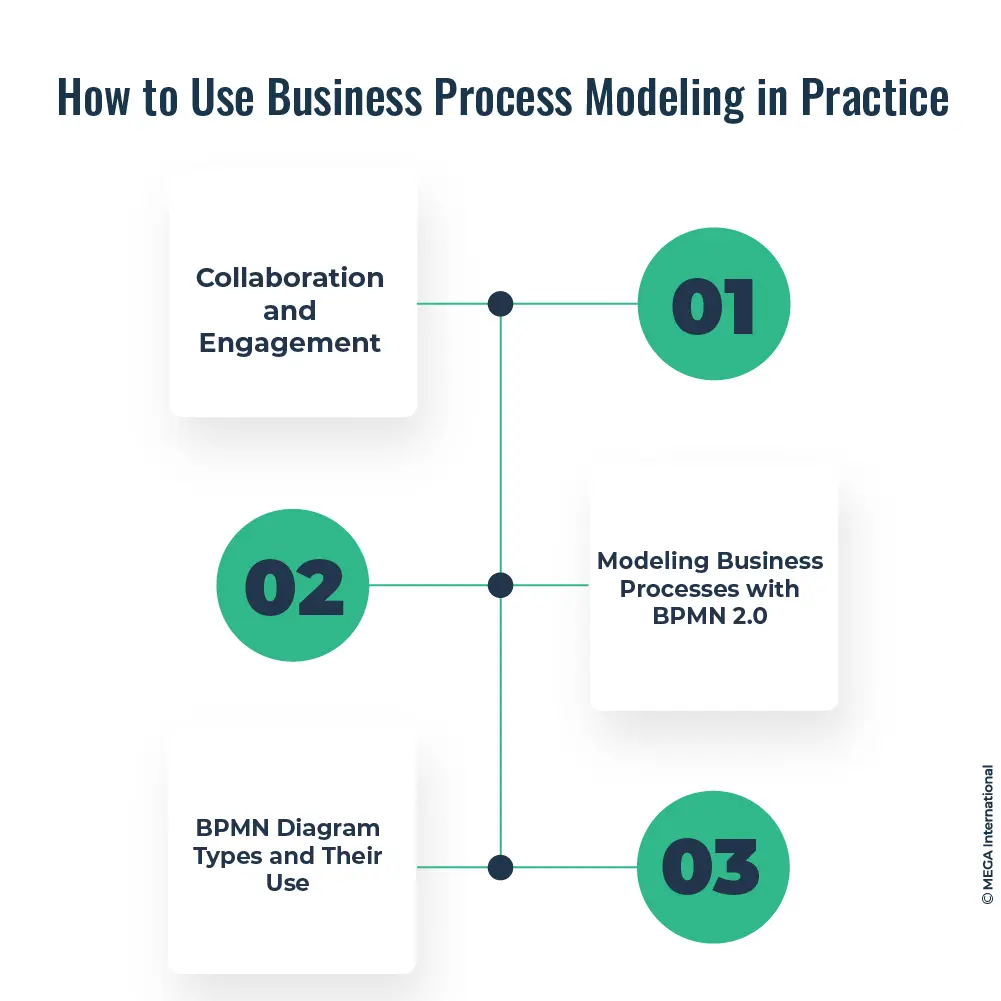
Selecting the Right Business Process Modeling Tool
Selecting the right business process modeling tool is crucial for ensuring success. Several factors are to be considered, such as ease of use, collaborative features, and support for different modeling techniques.
Modeling Business Processes with BPMN 2.0
BPMN 2.0 is the latest version of the BPMN standard and provides several enhancements over the previous version. It includes support for more events, better collaboration features, and improved interoperability with other systems. When modeling business processes with BPMN 2.0, following best practices and using the appropriate diagram types is essential.
BPMN Diagram Types and Their Uses
There are several types of BPMN diagrams, each with its unique purpose. The most common ones include:
- Process diagram: Depicts the overall flow of a process
- Collaboration diagram: This shows how different roles and systems interact during the process
- Choreography diagram: Depicts how different participants interact with each other during the process
Visual Representation of Business Processes: Techniques and Tools
Gantt Charts and Stakeholder Diagrams
Gantt charts and stakeholder diagrams are two other visual representation techniques that you can use for business process modeling. Gantt charts provide a timeline view of the process, while stakeholder diagrams show the entities involved.
Flow Diagrams and Data Flow Diagrams
Flow diagrams and data flow diagrams are two techniques that are useful for modeling how data flows through a system. They are especially helpful for modeling complex processes involving multiple systems and data sources.
Challenges in Business Process Modeling
While business process modeling can help organizations improve their efficiency and effectiveness, it presents several challenges. Some of the common challenges include:
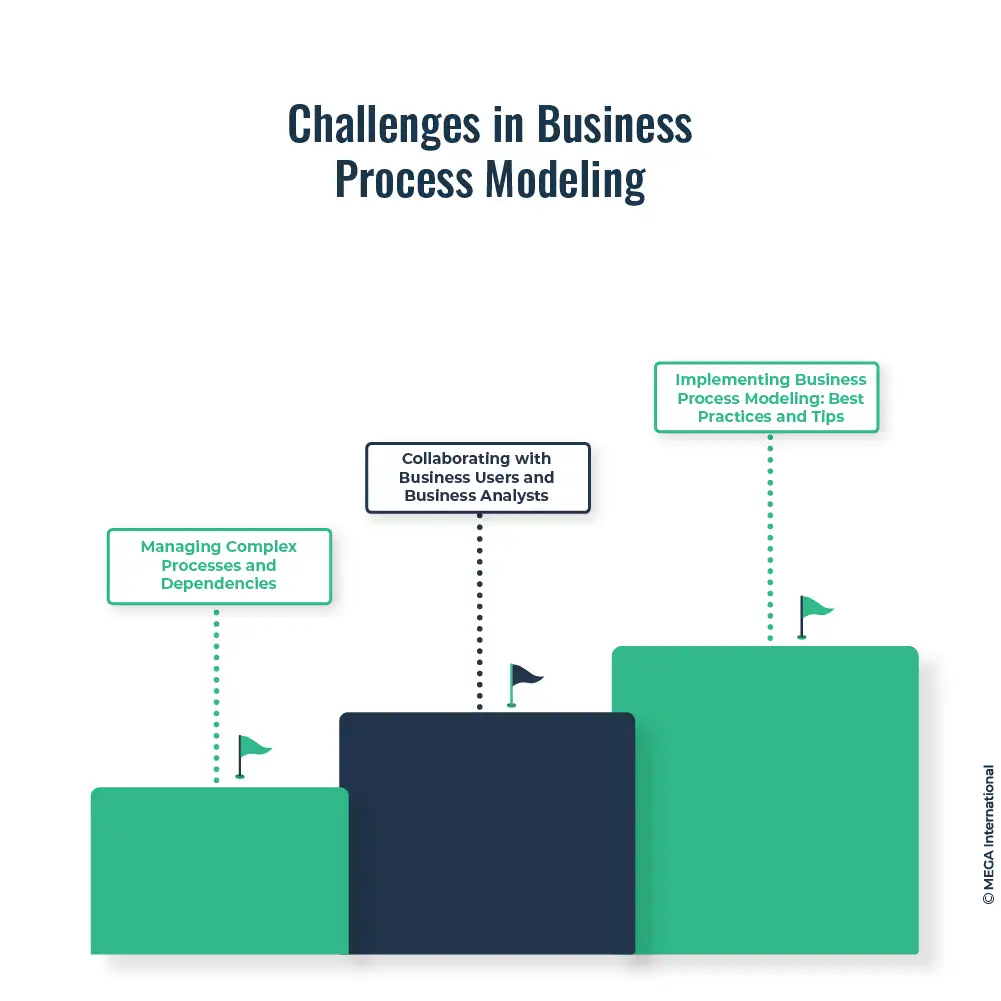
Managing Complex Processes and Dependencies
Complex processes and dependencies can make creating an accurate business process model challenging. It's essential to break down the process into smaller, more manageable pieces and identify the critical dependencies.
Collaborating with Business Users and Business Analysts
Collaboration is key to successful business process modeling. From the beginning, it's essential to involve business users and analysts and get their input on the process.
Implementing Business Process Modeling: Best Practices and Tips
Implementing business process modeling requires careful planning and execution. Some best practices and tips to keep in mind include:
- Start small and focus on the most critical processes
- Involve stakeholders from the beginning
- Use the appropriate modeling techniques and tools for the process
- Test the process model before implementing it
Following these best practices can ensure a successful business process management initiative.
Business Process Modeling and Digital Transformation
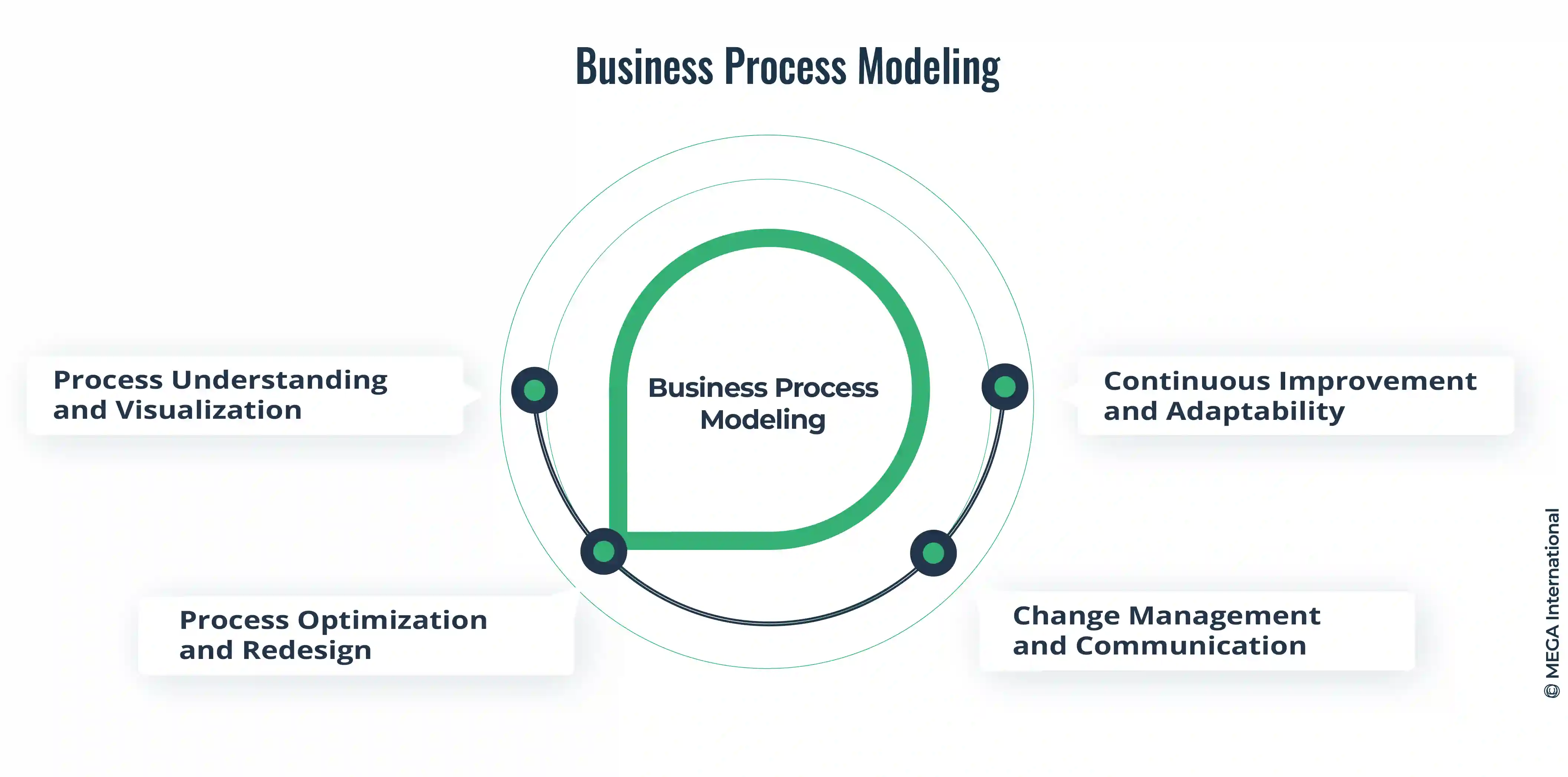
Business process modeling is crucial for organizations to stay relevant in the ever-evolving digital landscape. It involves analyzing and mapping out existing business processes and identifying areas for improvement. By doing so, companies can increase efficiency, reduce waste, and improve customer experience.
However, the benefits of business process modeling extend far beyond just improving current operations. In digital transformation, organizations can use process modeling to identify opportunities for implementing new technologies and integrating them seamlessly into their existing systems.
This can lead to significant gains in productivity and competitiveness. In addition, process modeling can help foster a culture of innovation by encouraging creativity and collaboration among team members. As businesses continue to navigate the complex challenges of digital transformation, process modeling will become an increasingly important tool for achieving success in the digital age.
Here's how business process modeling contributes to digital transformation:
a. Process Understanding and Visualization
Business process modeling allows organizations to understand their existing processes comprehensively. By visualizing and mapping out workflows, dependencies, and interactions, organizations can identify inefficiencies, bottlenecks, and opportunities for improvement.
With a clear understanding of current processes, organizations can evaluate how digital technologies can be integrated to enhance efficiency, streamline operations, and deliver superior value to customers. Process visualization also helps organizational stakeholders gain a shared understanding, fostering collaboration and alignment in the digital transformation journey.
b. Process Optimization and Redesign
Digital transformation often involves reengineering processes to leverage the capabilities of emerging technologies. Business process modeling provides a systematic framework for identifying areas that require optimization or a complete redesign.
Organizations can identify redundant steps, eliminate bottlenecks, and automate manual tasks by analyzing process models. This optimization reduces cycle times, enhances productivity, and improves customer experience. Organizations can leverage business process modeling to design new, digital-first processes that leverage robotic process automation, machine learning, and predictive analytics.
c. Change Management and Communication
Digital transformation initiatives require effective change management and communication strategies to ensure successful implementation. Business process modeling is a powerful communication tool that helps organizations articulate their transformation vision, engage stakeholders, and manage change effectively.
Process models visually represent the future state, making it easier for employees to understand the intended changes and their impact. Organizations can foster a sense of ownership, collaboration, and commitment to the digital transformation journey by involving employees in the modeling process.
d. Continuous Improvement and Adaptability
Digital transformation is not a one-time event but a continuous journey. Business process modeling enables organizations to continuously monitor, evaluate, and refine their processes to keep pace with evolving market dynamics and emerging technologies.
By regularly revisiting process models, organizations can identify areas for further improvement, adapt to changing customer needs, and leverage new technological advancements. Business process modeling provides the agility and flexibility necessary to navigate the complexities of the digital landscape and ensure sustained success in the long run.
Business Process Modeling Best Practices for Digital Transformation
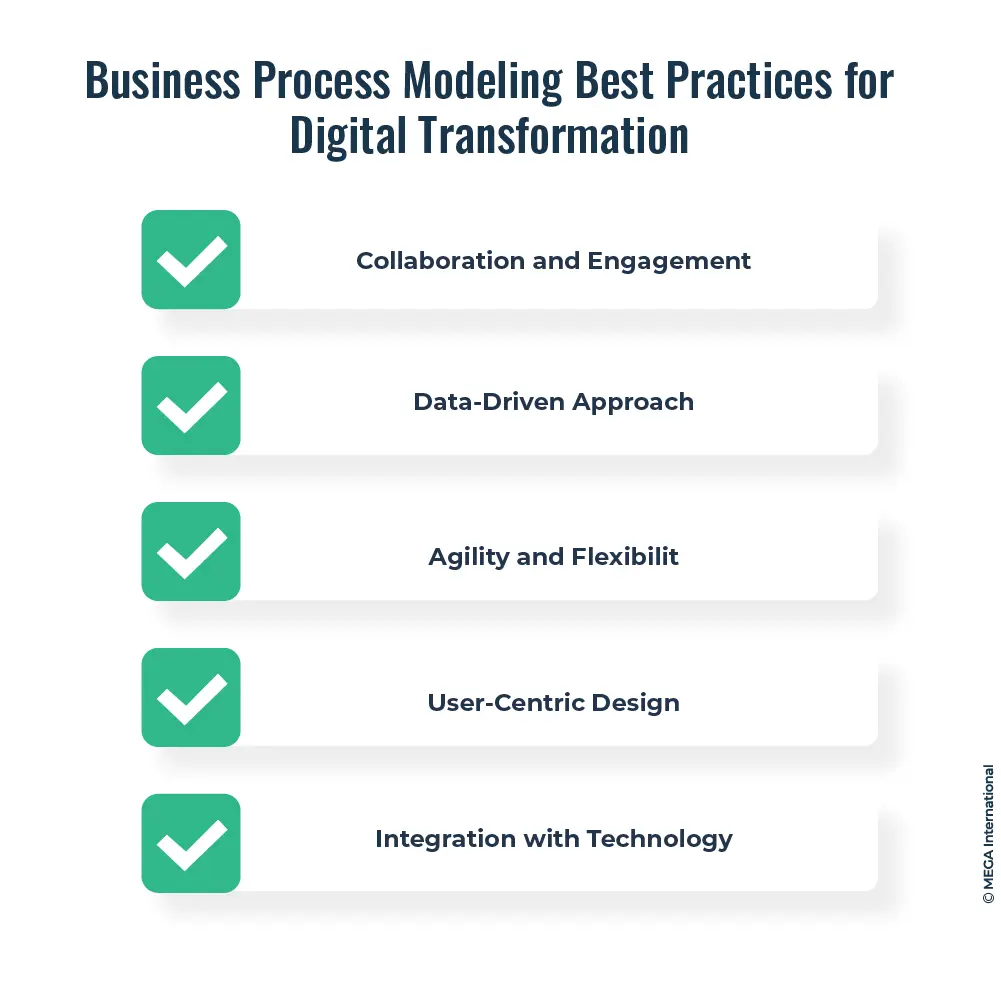
To effectively leverage business process modeling for digital transformation, organizations should follow best practices:
- Collaboration and Engagement: Involve stakeholders from across the organization, including process owners, subject matter experts, and technology specialists, to ensure a holistic perspective and foster collaboration.
- Data-Driven Approach: Utilize data analytics to gain insights into process performance, identify improvement opportunities, and drive informed decision-making throughout the digital transformation journey.
- Agility and Flexibility: Embrace an iterative and agile approach to business process modeling, allowing for quick adjustments and adaptations as new information, technologies, and customer requirements emerge.
- User-Centric Design: Prioritize the customer experience and design processes that deliver value, convenience, and personalization to the end-user.
- Integration with Technology: Ensure alignment between business process modeling efforts and the digital technologies to be implemented, enabling seamless integration and maximizing the benefits of digital transformation.
The Future of Business Process Modeling
As the world rapidly evolves, so does business process modeling. Traditional approaches are being augmented and transformed by emerging technologies and trends. In this section, we will explore two key aspects that shape the future of business process modeling: integration with artificial intelligence and the advent of mobile and cloud-based platforms.
1. Integration with Artificial Intelligence
Artificial intelligence (AI) has emerged as a game-changer in various industries, and its integration with business process modeling holds immense potential. Organizations can achieve more advanced process automation, intelligent decision-making, and predictive analytics by leveraging AI capabilities.
AI can analyze large volumes of data and identify patterns, enabling businesses to uncover hidden insights and optimize their processes. Machine learning algorithms can learn from historical data, making predictions and recommendations for process improvements. This integration empowers organizations to make data-driven decisions and stay ahead of the competition.
Moreover, AI can enable the automation of complex tasks, reducing manual effort and human error. Intelligent bots and virtual assistants can handle routine and repetitive tasks, freeing up human resources to focus on higher-value activities. This integration streamlines operations and enhances efficiency, leading to cost savings and improved customer satisfaction.
2. Mobile and Cloud-Based Platforms
In today's fast-paced and interconnected world, the need for flexibility and accessibility is paramount. Business process modeling is no exception, with the increasing adoption of mobile and cloud-based platforms transforming how organizations approach process optimization.
Mobile platforms enable users to access process models and related information on the go, empowering employees to make informed decisions and collaborate effectively. Process stakeholders can review and provide feedback on process models in real-time, regardless of their physical location. This mobility fosters agility and facilitates seamless collaboration across teams and departments.
Additionally, cloud-based platforms offer numerous advantages for business process modeling. They provide a centralized repository for storing and managing process models, ensuring version control and easy access for authorized users. Cloud platforms also facilitate collaboration by allowing multiple users to work on process models simultaneously, promoting cross-functional engagement and alignment.
Furthermore, cloud-based platforms enable organizations to leverage scalable computing power and advanced analytics capabilities. They can harness the power of big data and perform complex simulations and scenario analysis, driving evidence-based decision-making and continuous process improvement.
How to Choose the Right Tool for Your Business
Choosing the right business process modeling tool is essential for maximizing the benefits of process optimization. When selecting a tool, consider the following factors:
- Functionality: Evaluate the tool's features and functionalities to ensure they align with your organization's requirements. Consider the modeling notations supported, collaboration capabilities, process simulation, and integration options.
- Ease of Use: Look for a tool with a user-friendly interface and intuitive design. The tool should allow technical and non-technical users to easily create and edit process models.
- Scalability: Consider the tool's scalability to accommodate the growing needs of your organization. Ensure it can handle complex process models, support many users, and integrate with other systems as needed.
- Support and Training: Assess the tool vendor's availability of support and training resources. Look for documentation, tutorials, and community forums to aid in your learning and troubleshooting processes.
- Cost: Consider the cost of the tool, including licensing fees, maintenance, and support costs. Evaluate whether the tool's benefits justify the investment for your organization.
Summary
Business process modeling is essential for organizations that want to streamline processes and improve efficiency and effectiveness. By following the right modeling techniques, selecting the appropriate tools, and collaborating with stakeholders, you can create accurate and useful process models to help you achieve your goals.
FAQs
Business Process Modeling is a technique used to visually represent the steps, activities, and decision points involved in a specific business process. It helps businesses understand, analyze, and optimize their processes to improve efficiency, productivity, and profitability. The modeling technique usually involves diagrams and notations such as BPMN, UML, flowcharts, and data flow diagrams.
BPMN (Business Process Modeling Notation) is a graphical modeling language commonly used to depict business processes in a standardized format visually. This notation provides a common language that both technical and non-technical stakeholders can easily understand and also supports the automation of business processes in software systems.
There are several benefits of Business Process Modeling, including:
- Improved process understanding and analysis
- Increased productivity and efficiency by streamlining processes
- Enhanced quality and consistency of outputs
- Better communication and collaboration between stakeholders
- Reduced errors, delays, and bottlenecks
There are three main types of business processes:
- Operational processes: involve the core activities of an organization, such as production, sales, and customer service.
- Management processes focus on planning, coordinating, and controlling an organization's resources.
- Support processes: provide support and enable the effective functioning of the operational and management processes, such as HR, IT, and finance.
Some popular modeling techniques used in Business Process Modeling include:
- BPMN (Business Process Modeling Notation)
- Flowcharts
- Data flow diagrams
- UML (Unified Modeling Language)
BPMN is designed explicitly to model business processes and focuses more on the flow of activities and events. On the other hand, UML is more broad-based and is used to model various aspects of software systems, including structural, behavioral, and functional aspects.
Related Content to Business Process Management
Get a clear understanding of how your operation runs, identify areas of improvement, and build scenarios to optimize and transform business processes;
MEGA HOPEX for BPM
Request a demonstration of HOPEX for BPM, and see how you can have immediate value of your projects.






